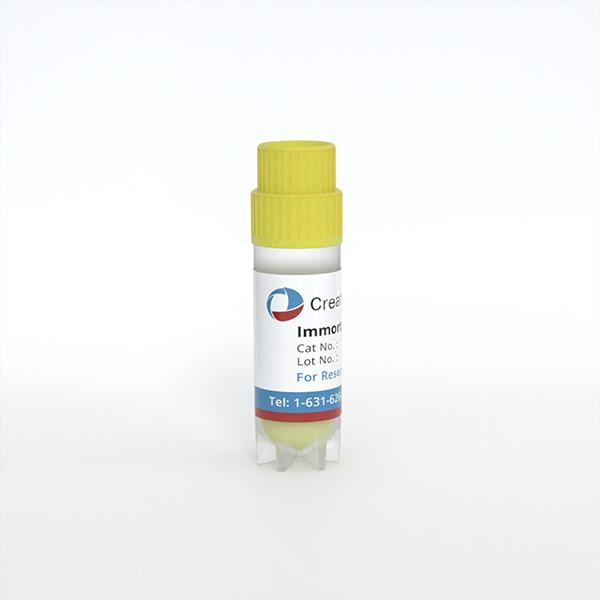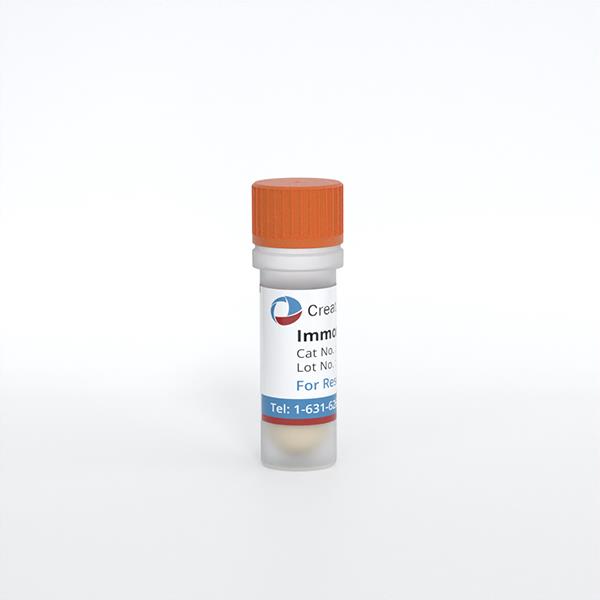
Immortalized Porcine Aortic Endothelial Cells (AOC)
Cat.No.: CSC-I9192L
Species: Mus musculus
Source: Aorta
Morphology: Cobblestone-like
Culture Properties: Adherent
- Specification
- Q & A
- Customer Review
Cat.No.
CSC-I9192L
Description
Recently proposed as a potential model of atherosclerosis, allograft rejection and accommodation, xenotransplantation and viral haemorrhage diseases, the porcine endothelial cells provide a useful tool in studies including the molecular mechanisms of xenogeneic rejection in the swine-to-human combination, and the pathogenesis of African Swine Fever (ASF) and Classical Swine Fever (CSF). The Immortalized Porcine Aortic Endothelial Cells (AOC) is derived from stable transformation of SV40 genome into primary porcine aortic endothelial cells. The resulting AOC retains comparable surface markers to its primary cell counterparts, as well as preserving its ability to uptake acetylated low density lipoproteins (Ac-LDL) and its susceptibility to xenogeneic cell-mediated cytotoxicity (i.e. Human Natural Killer Cell-mediated lysis).
Species
Mus musculus
Source
Aorta
Culture Properties
Adherent
Morphology
Cobblestone-like
Immortalization Method
Tranfection with pRNS-1 plasmid encoding the SV40 genome
Markers
CD29, CD31, CD41/61, CD80/86, CD46, SWC3, LAMP-1
Application
For Research Use Only
Storage
Directly and immediately transfer cells from dry ice to liquid nitrogen upon receiving and keep the cells in liquid nitrogen until cell culture needed for experiments.
Note: Never can cells be kept at -20 °C.
Note: Never can cells be kept at -20 °C.
Shipping
Dry Ice.
Recommended Products
CSC-C1755 Porcine Aortic Endothelial Cells
CIK-HT003 HT® Lenti-SV40T Immortalization Kit
CIK-HT003 HT® Lenti-SV40T Immortalization Kit
Quality Control
1) Flow cytometry was used to confirm the expression of endothelial cell markers such as CD29, CD31, CD41/61, CD80/86, CD46, SWC3, LAMP-1 antigen and MHC Class I antigens;
2) 51Cr release assay was used to analyse the susceptibility of AOC to xenogeneic cell-mediated cytotoxicity;
3) 1,1’-dioctadecyl-3,3,3’,3’-tetramethylindocarbocyanine (DiI) -labelled Ac-LDL was used to evaluate Ac-LDL update by the AOC.
2) 51Cr release assay was used to analyse the susceptibility of AOC to xenogeneic cell-mediated cytotoxicity;
3) 1,1’-dioctadecyl-3,3,3’,3’-tetramethylindocarbocyanine (DiI) -labelled Ac-LDL was used to evaluate Ac-LDL update by the AOC.
BioSafety Level
II
Citation Guidance
If you use this products in your scientific publication, it should be cited in the publication as: Creative Bioarray cat no.
If your paper has been published, please click here
to submit the PubMed ID of your paper to get a coupon.
Ask a Question
Write your own review
Related Products
Featured Products
- Adipose Tissue-Derived Stem Cells
- Human Neurons
- Mouse Probe
- Whole Chromosome Painting Probes
- Hepatic Cells
- Renal Cells
- In Vitro ADME Kits
- Tissue Microarray
- Tissue Blocks
- Tissue Sections
- FFPE Cell Pellet
- Probe
- Centromere Probes
- Telomere Probes
- Satellite Enumeration Probes
- Subtelomere Specific Probes
- Bacterial Probes
- ISH/FISH Probes
- Exosome Isolation Kit
- Human Adult Stem Cells
- Mouse Stem Cells
- iPSCs
- Mouse Embryonic Stem Cells
- iPSC Differentiation Kits
- Mesenchymal Stem Cells
- Immortalized Human Cells
- Immortalized Murine Cells
- Cell Immortalization Kit
- Adipose Cells
- Cardiac Cells
- Dermal Cells
- Epidermal Cells
- Peripheral Blood Mononuclear Cells
- Umbilical Cord Cells
- Monkey Primary Cells
- Mouse Primary Cells
- Breast Tumor Cells
- Colorectal Tumor Cells
- Esophageal Tumor Cells
- Lung Tumor Cells
- Leukemia/Lymphoma/Myeloma Cells
- Ovarian Tumor Cells
- Pancreatic Tumor Cells
- Mouse Tumor Cells
Hot Products
